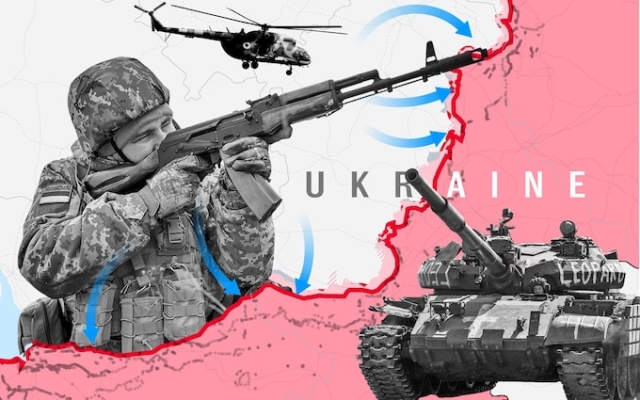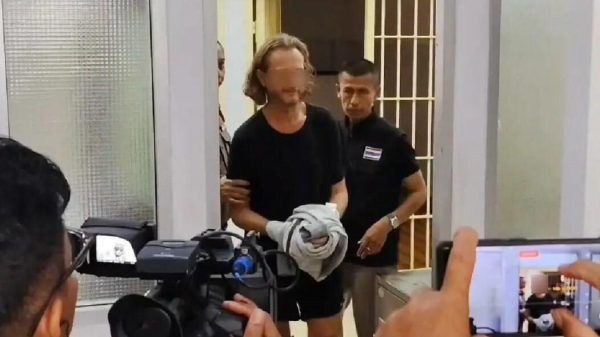 This week, the Ukrainian counter-offensive against the Russian occupier began
This week, the Ukrainian counter-offensive against the Russian occupier began
“Today is the night of nights.”
< p>These words were in the ears of American paratroopers as they boarded planes on Monday, June 5, 1944, in Kent.
They were about to launch the most difficult operation in history, the Normandy landings, which eventually led to the liberation of occupied Europe.
Exactly 79 years later, Ukrainian officers are quoting these words to their men and women. The long-touted, much-touted and eagerly anticipated Ukrainian counter-offensive against the Russian occupier began this week, or at least accelerated significantly.
1006 Ukraine, Frontline
Ukrainians have been conducting preparatory formative operations for the past two months. They are designed to soften the enemy, mislead him as to your intentions, and gather information about his strengths and weaknesses. In other words, shape the enemy to your liking so that they are easier to defeat when you finally attack them.
Most strikingly, the Russian Legion of Freedom, a Ukrainian armed and backed paramilitary group made up of Russian citizens, made bold and daring incursions into the Russian territories of Belgorod and Kursk. Judging by the absence of Russian defensive troops along their own border, the Kremlin clearly considered them safe. Not anymore. And as a result, the Russians now have to contend with a double front line, further stretching the already stretched troops.
This week the Ukrainians switched from forming operations. They are now moving on to the first phase of their counteroffensive. And instead of using all their forces and all the equipment donated by the West — about nine armored brigades and supporting infantry — they chose several mini-offensives with much smaller groups.
This is how the week turned out.
Monday
At the beginning of the week, Ukraine launched several small probes that captured areas around the city of Vuhledar in the south of the country. east of the country. Along with distracting maneuvers in the area of Velikaya Novoselka, two company attacks were carried out in the direction of the city of Ugledar itself.
Ukraine's attack and feint
Ugledar is an area from which the Russians made repeated assaults in late winter and early spring, so the defensive lines there are less prepared.
The city also occupies a key position due to the nearby railway lines, which the Russians depend heavily on to supply their troops. Mariupol is also 45 miles along the coast. A successful offensive here would split Russian forces in Ukraine into two separate forces.
0506 Ukraine 2
Ukrainians are most likely studying the strength of Russian defenses in the area to see if the area is suitable for a future assault.
Tuesday
Ukraine's activity on Monday was a clear signal to Russian forces that the counteroffensive had entered a different phase. They had to do something, and at 2:50 in the morning they blew a hole in the dam of the Kakhovka hydroelectric power station in southern Ukraine. It is likely that the Russians intended to make a smaller breach in the dam, just enough to make the river impassable to a Ukrainian counteroffensive.
1006 Map of the dam
A huge wave of water rushed downstream, reaching the city of Kherson by morning, flooding villages and towns on both banks of the river. But the wave also destroyed several Russian positions on the south bank of the river, prompting videos of Russian soldiers wading through muddy flood water or, in one case, climbing up treetops to avoid being washed away.
From a military standpoint, the river south of the dam is now completely impassable, limiting Ukraine's options in the short term. However, in a little over a week the floodwaters will recede and the river downstream of the dam will return to roughly its original state. Upstream of the dam, what was the reservoir will become a river again, potentially making the area crossable once the reservoir bed dries up. In short, in the long run, the dam failure did not really help either side, in fact, it could be argued that it gave both sides additional cause for concern.
Wednesday
Restoring momentum after a dam breach As a result of the explosion, Ukraine has stepped up its attacks on Bakhmut, a small town to the east that the Russians recently took control of after more than six months of heavy and costly fighting. This takeover of Russia was led by a group of Wagner mercenaries who, after taking control of the city, handed it over to regular Russian troops.
1006 bakhmut
On Monday, the Ukrainians began attacking them using Poland-provided T-72 tanks and Ukrainian infantry fighting vehicles, focusing on special attention to the northern and southern flanks of the city, where the Russians were the weakest. They made good and fast progress: according to some reports, they advanced 1.5 km through the positions of the Russian military.
The role of Bakhmut's attack is twofold. Firstly, the city is symbolically important for the Russians, who spent so much blood and money to capture it. As a result, the Russians are afraid of kickbacks and keep thousands of Russian troops there. Secondly, any Russian loss of territory here greatly exacerbates friction between the regular Russian military and the Wagner mercenary group.
Thursdays and Fridays
After launching speculative attacks in Vuhledar and spotting a large number of Russian troops in Bakhmut, Ukraine, launched the largest offensive this week from Orekhov, heading south towards the important Russian logistical hub Tokmak.
1006 Orikhov District
This area has been around for a long time was considered the most promising place for Ukraine to concentrate a counteroffensive, so the Russians heavily fortified it with numerous overlapping lines of defense, consisting of trench systems, anti-tank ditches and traps, interspersed with minefields.
Leaving early in the morning, four Ukrainian companies on American infantry fighting vehicles and German Leopard 2 tanks quickly broke into the prepared Russian defenses. Judging by the drone footage, they suffered heavy losses: Leopards and American Bradley fighting vehicles were left smoking in a field covered with craters.
The Leopard is participating in the fighting in Ukraine
On the whole, however, the assaults managed to break through the first line in places, and, more importantly, they helped determine the exact positions of the Russians. The Ukrainians then fired GPS-guided Himars missiles at these positions, letting Ukrainian troops through. This is the area of the most intense fighting, and since then Ukraine has sent additional troops to this direction, seeking to achieve the long-term goal of reaching the coast and cutting the Russian “land bridge” to Crimea.
So far, success. ?
Inevitably, even without the fog of war, it is very difficult to tell how successful the counterattacks were in their early stages. In some areas, the Ukrainians broke through the original Russian defensive positions, albeit at the cost of destroyed vehicles and a large number of casualties. Whether they will be able to take advantage of these initial gains is a question we don't know the answer to.
Michael Kofman, a leading US military analyst, said of this week's success: «It's not something you judge by several days of fighting. Combat casualty frames to be expected may have an anchoring effect. The offensive will last weeks, maybe months.”
Preparing for a Ukrainian counteroffensive
The more important question is where Ukraine decides to deploy its main Western-equipped forces next. We have yet seen little of the deployed general mass. It seems likely that the two options are around Vuhledar or Tokmok, but the Ukrainians surprised us earlier and went in a completely different direction.
However, it is clear that the Ukrainians are now committed, the counteroffensive has begun and it will only be more intense and bloody.
Mike Martin is a Senior Visiting Fellow at King's College London and the author of the recently published book How to Make War.






















































Свежие комментарии